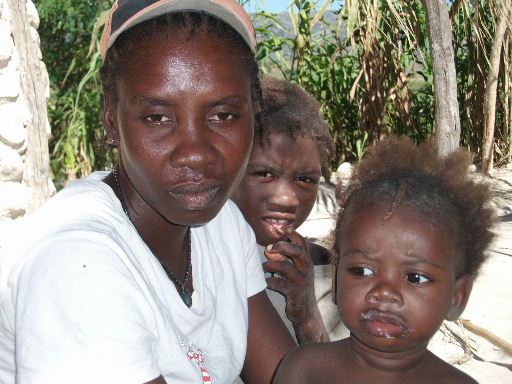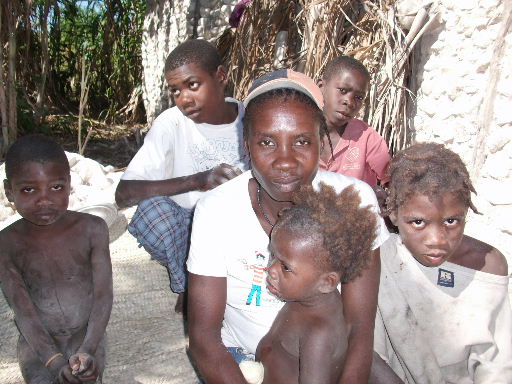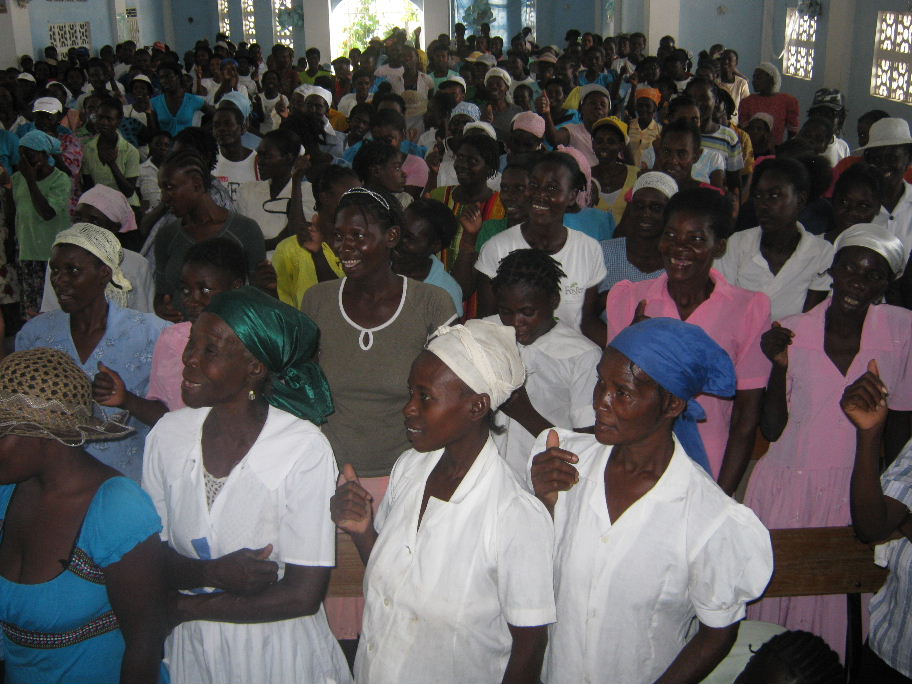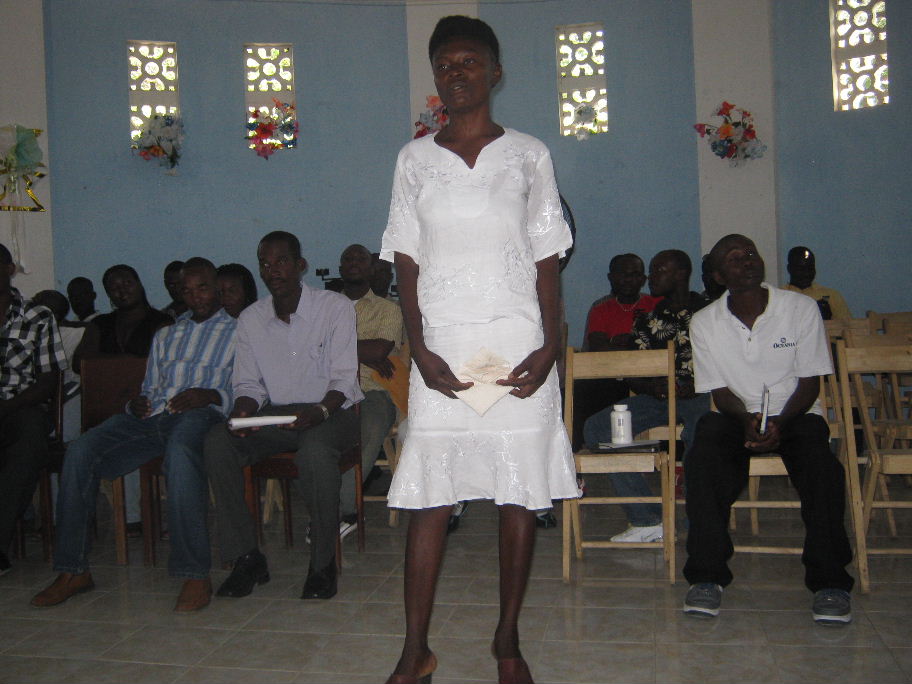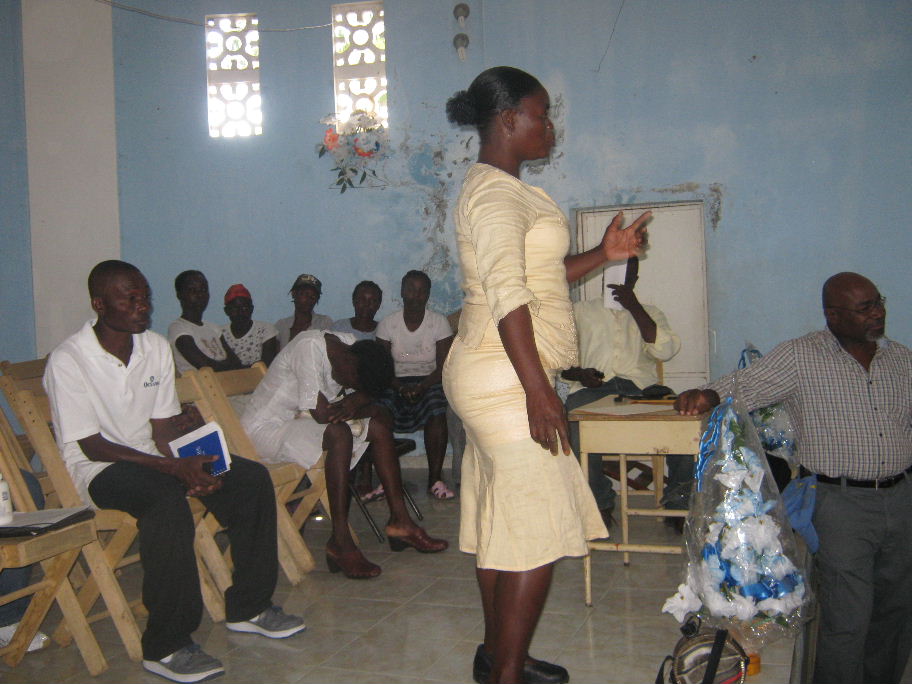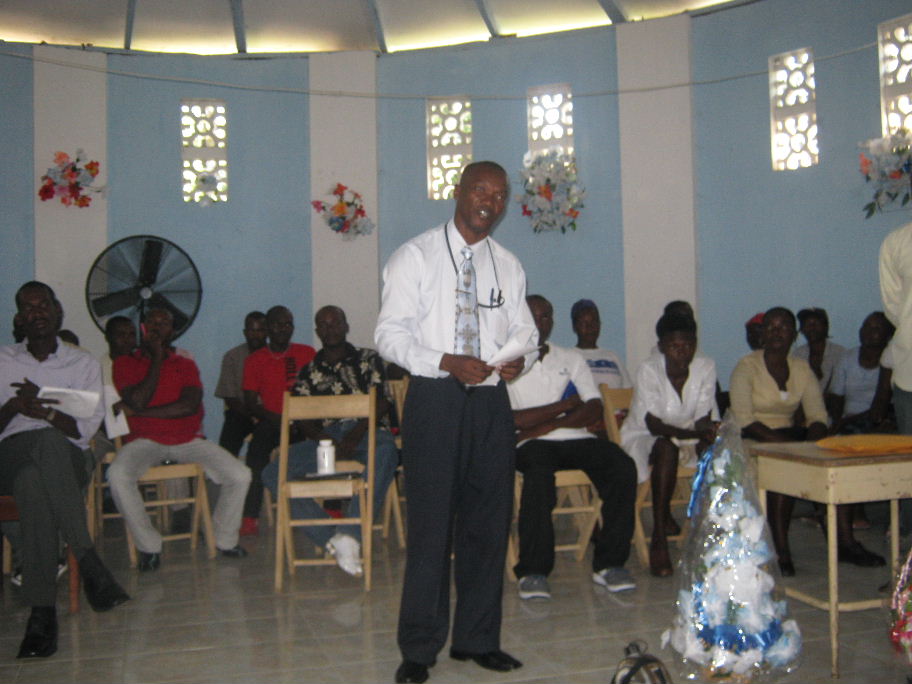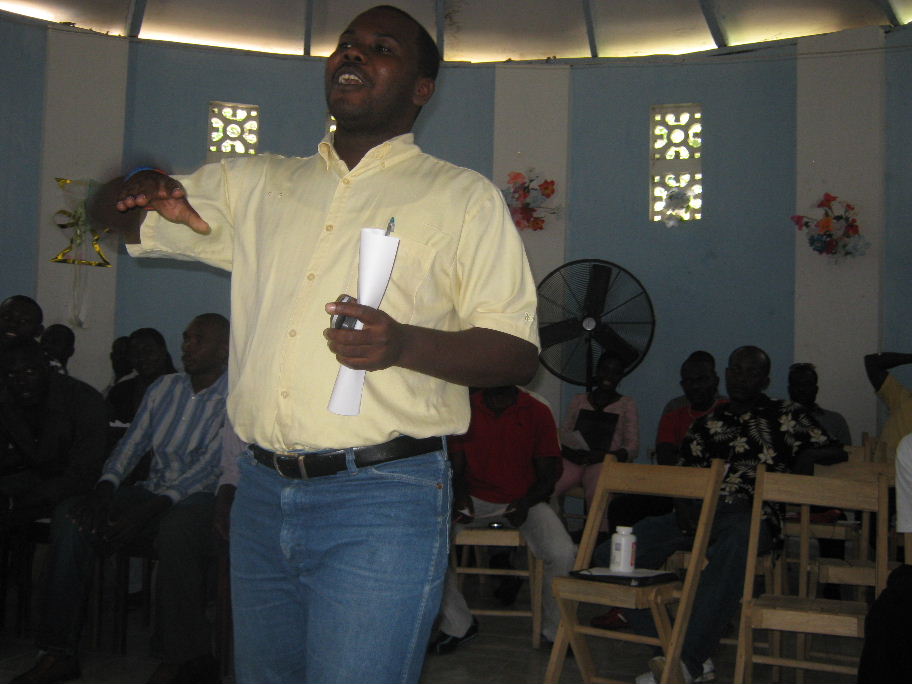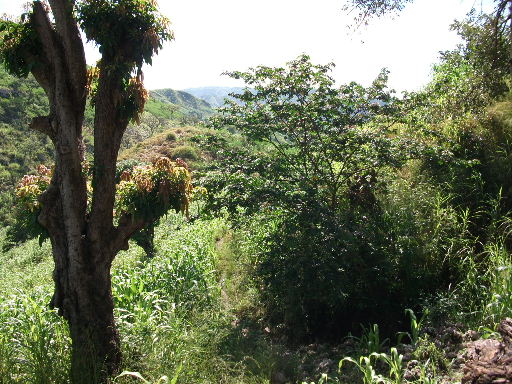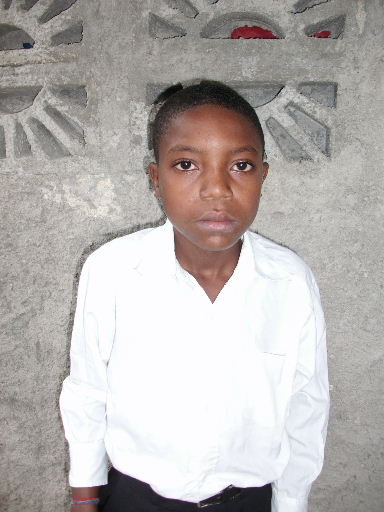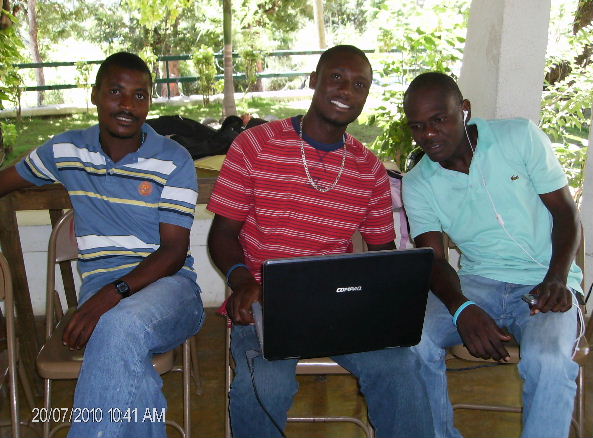Eileen’s parents died before she can remember, so she spent her early years living at an aunt’s house. As she began to come of age, she started to feel as though she was headed down a dead-end street. “Pat gen anyen ki t ap mache la,” she said. That’s like saying that nothing much was going on around her aunt’s house.
So she left her aunt’s and started wandering around the other parts of Boukankare. Eventually, she met Don and his wife, and they took her in. At the time, they were relatively well-to-do farmers. They have a big family now, but at the time only a couple of their oldest children had been born. So Eileen moved in, and started to lend a hand around the house. To a certain degree, it must have seemed beneficial all the way around. Don and his wife gave Eileen her meals and a place to stay, and Eileen did chores around the house. She became unpaid domestic help. Eight years ago, Eileen became pregnant. She gave birth to a little boy. The boy’s father showed no interest in her or him, so they continued to stay with Don and his family.
Eileen was selected to join CLM in November. The choice was easy enough. She is an adult woman, sleeping on the floor of a stranger’s home because she has nothing of her own. No assets, no income, no prospects of having either any time soon. She attended two weeks of training in December, having selected goat and pig rearing as her two enterprises because, as she said, “They reproduce quickly, and can make money quickly, too.”
When her case manager, Sandra, first went to meet her last week, she discovered a couple of problems. First of all, Eileen’s boy wasn’t living with her. It turns out that, about a year ago, Don decided he could no longer support both Eileen and the boy. He has six kids and a grandchild to care for. His oldest daughter became pregnant while she was living away from home to go to high school. So he took in her son, and sent her back to school. He also has a younger brother whom his parents left in his hands. He has a fair amount of land and livestock, but it doesn’t go far with a family as big as his.
So he sent Eileen’s boy away, back to the aunt whom Eileen had grown up with. Since only women who are responsible for children are eligible for CLM, Eileen would have to be dropped from the program.
Sandra understood that. She just didn’t want to leave it at that. She wanted Eileen to be able to live with and raise her own child. And she wanted her to be able to be part of CLM. So she talked with her and with Don, and convinced them to send for the kid. Don even said he would give her a corner of his yard where she could build a little house. Eileen would have her own income soon, so she’d be able to support him herself.
But there was another problem. Don raises goats and pigs already. Our program requires members to build little shelters for goats and pigs. It helps them keep an eye on their animals, and protects the animals from the elements. To Don, it all seemed a little silly. He’s very successful raising his animals, and wanted to put Eileen’s together with his own. They would be able to take care of them together, and her animals would immediately be less trouble for him.
We didn’t like the proposed arrangement. We felt it would hold Eileen back as she struggles to establish herself as a woman of independent, though very limited, means. So I had a long talk with Don, explaining to him how important it would be for Eileen’s education for her to keep her animals apart, somewhere where she could really sense her full responsibility for them. It took some time, but Don finally agreed. He even offered to help her collect the materials she would need to build the structures. He seems to mean well.
We’ll have to see. Helping Eileen negotiate a path to independence will be a challenge for Sandra. Don and his wife are used to receiving her full, unpaid attention. Her new assets could be a lot of work. She might start to find herself too busy to do everything they ask of her. It’s hard to foresee how they will react.
But without CLM, Eileen is unlikely to ever be anything more than a servant in their home, doing everything from hauling water and light housework to the heavy farm labor in Don’s fields. With CLM, she just might be able to begin building a life for herself and her son.
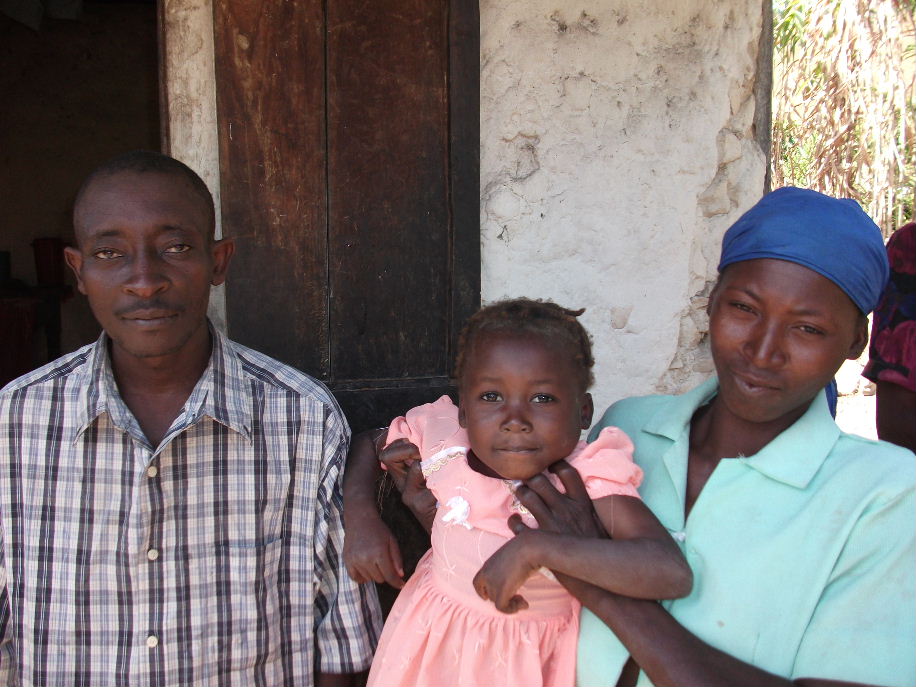 Barbara, with her husband and one of their daughters.
Barbara, with her husband and one of their daughters.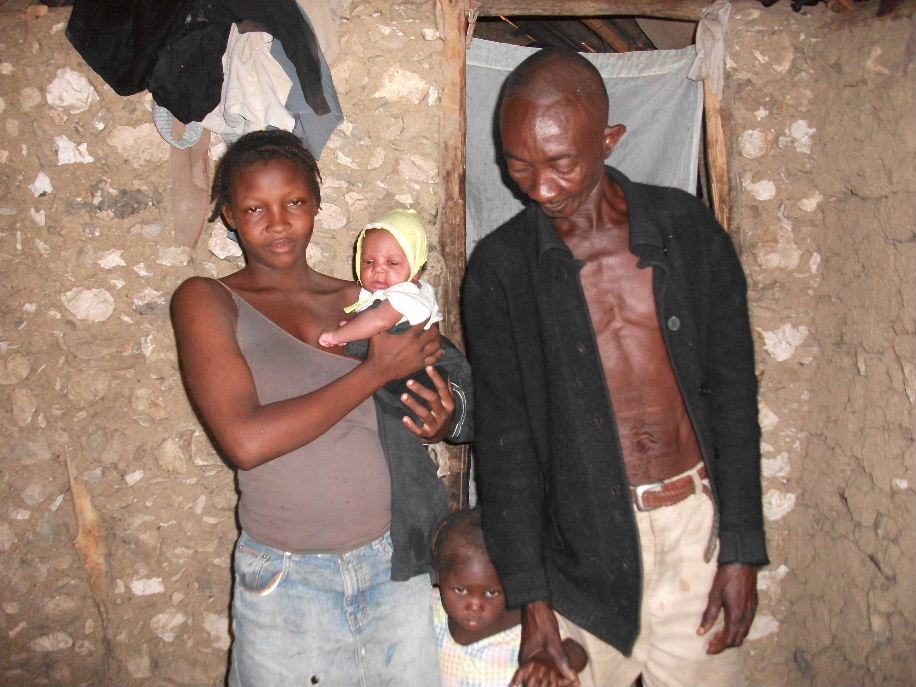 Beverly, with her husband and their two daughters.
Beverly, with her husband and their two daughters.